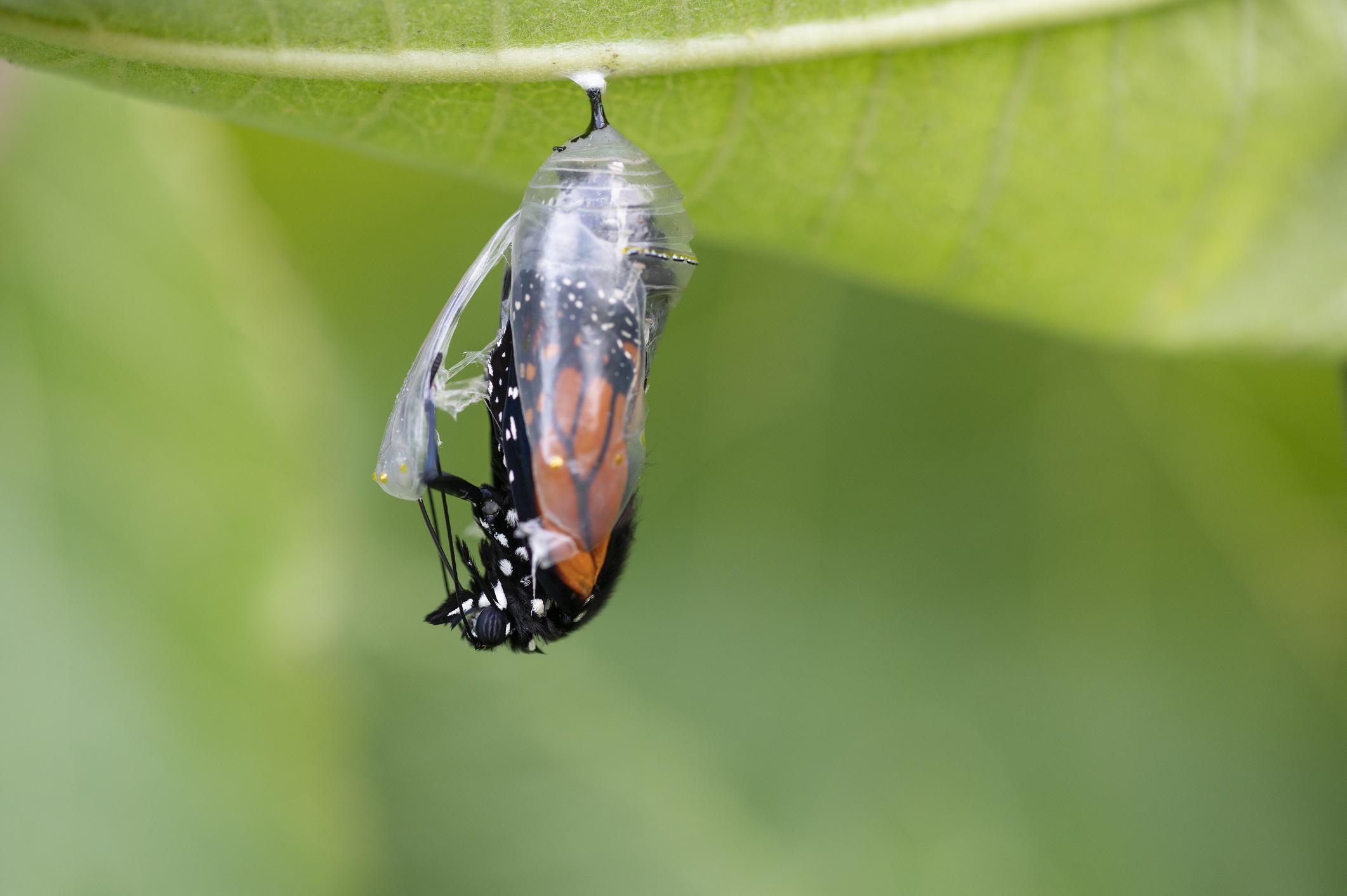THE LIFE CYCLE OF A BUTTERFLY: FROM PUPA TO POLLINATOR
Posted by Mosquito Squad
May 6, 2024

Author: Emma Grace Crumbley, Entomologist
Butterflies are important pollinators of many flowering plants. Their life cycle is iconic, and for good reason: it's unlike any other insect's metamorphosis. Let's explore how butterflies change and what each life cycle step looks like!
Egg
It's rare to see a butterfly egg unless you're raising butterflies. Butterfly eggs are tiny, about the size of the eye of a needle, and butterflies tend to lay their eggs on the underside of leaves for more protection. The eggs themselves are ribbed and slightly pointed, and teeny, tiny caterpillars are waiting to hatch inside. Adult butterflies take special care when laying their eggs. Through sight, smell, and chemical reception, adult butterflies will lay their eggs on host plants that the caterpillar is equipped to eat.
TIP: Each butterfly species has its own list of host plants, so to attract more butterflies to your yard or garden, look up what plants that butterfly needs to lay eggs on. For example, the host plant for monarch butterflies is milkweed, so planting more milkweeds will give monarchs more places to lay their eggs.
Larva
A very little and hungry caterpillar will emerge two to three days after a butterfly egg is laid! The caterpillar will first look for food to eat, and thankfully, the eggshell is soft enough and nutrient-filled to be the perfect first snack. After eating the eggshell, the caterpillar will start eating the host plant it's currently living on.
As caterpillars eat, they grow bigger and bigger. Entomologists describe caterpillars' sizes as instars to keep track of their age and development. Typically, caterpillars will go through five instars before being ready to pupate.
Pupa
After passing its fifth instar and hopefully eating as much food as possible, the caterpillar will pupate into a chrysalis. This process is incredibly challenging and unlike any other insect's development. The caterpillar will find a surface it can hang from, attach its backend to hang upside down and curve its body to make a J-shape. From this acrobatic position, the caterpillar will slowly shed its skin to reveal the chrysalis, which will harden and conceal the changing butterfly inside. Pupation is the most vulnerable stage of development, as the butterfly inside the chrysalis cannot eat or move.
Scientists are still trying to understand how this stage in the butterfly metamorphosis works. The chrysalis can twitch and shift in response to stimulus, but if you open a chrysalis to look inside, you won't see a caterpillar or butterfly. Instead, the inside of a developing chrysalis looks like caterpillar soup, gooey and green, with no sign of a living organism. Yet somehow, at the end of the ten-day pupation, an adult butterfly is fully formed and ready to emerge.
TIP: Toward the end of pupation, the once vibrant chrysalis will begin to fade and become see-through. Right before a butterfly emerges, wing patterns will be visible in the chrysalis. The patterns and colors can tell you what type of butterfly is waiting inside!
Adult
The fully grown adult butterfly will emerge upside down, positioned just like it was when it was a caterpillar. The butterfly will push itself out of the chrysalis shell and expel meconium, a liquid buildup from its time as a pupa. Before it can fly off, the butterfly will pump blood through its wings to expand them out fully, and the butterfly will hang upside down to dry its wings out. Butterflies cannot fly with flimsy, wet wings. This drying process can take anywhere from one hour to a half day, depending on the size of the wings and the dryness of the environment. Finally, when its wings are dry, the butterfly will take flight in search of food (it hasn't eaten in a week!). Then, all that's left to do is eat, mate, and lay more eggs. The cycle starts all over again.
From Pupa To Pollinator
From egg to adult, the life cycle of a butterfly takes about a month to complete. Once butterflies finally reach their fully winged form, they only live two to four weeks before dying. Their fast and fleeting beauty is a reminder that all good things must come to an end, but where there was once a butterfly, there is now an egg.
Promote Pollinators, Not Pests!
Mosquito Squad is dedicated to protecting important pollinators while keeping pests at bay in your outdoor spaces. Call today to learn about our natural mosquito treatment option and our pledge to pollinators.
